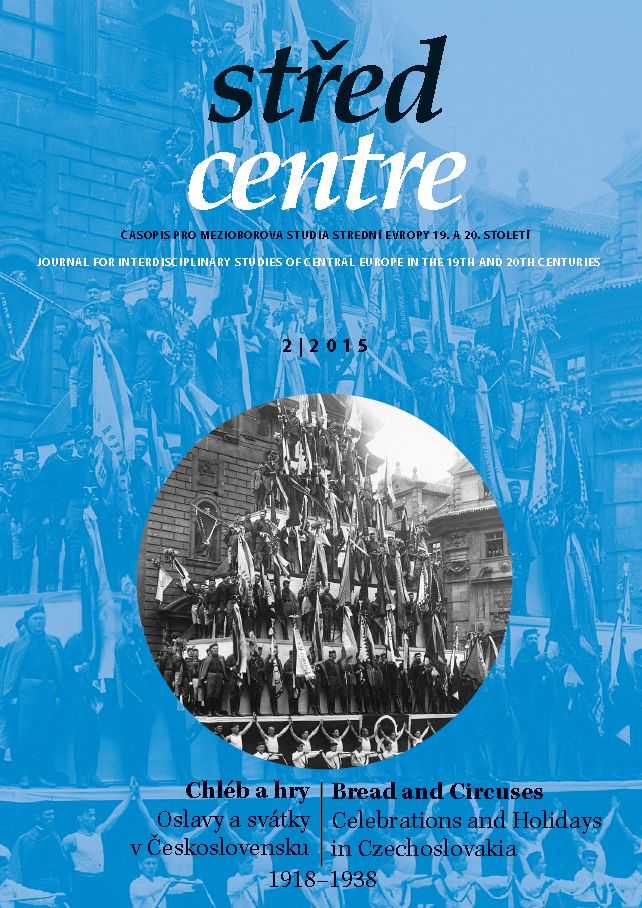Herrschaftsvermittlung an der Staatsgrenze?
Der Staatsfeiertag und die Besuche der Präsidenten in Znojmo/Znaim während der Zwischenkriegszeit
Communication of Power At the State Border?
October 28 And the Presidential Visits in Znojmo/Znaim
During the Interwar Period
Author(s): Johannes Florian KontnySubject(s): Cultural history, Political history, Interwar Period (1920 - 1939)
Published by: AV ČR - Akademie věd České republiky - Masarykův ústav
Keywords: Czechoslovakia; 1918–1938; State Celebrations; Visits; Commemoration; Tomáš Garrigue Masaryk; Edvard Beneš; Znojmo; Znaim
Summary/Abstract: The festivities on October 28 and the visits of presidents Tomáš Garrigue Masaryk and Edvard Beneš were central to the representation of the First Czechoslovak Republic during the interwar period. While the celebrations were dedicated to the state and its founders, they also refl ect the political situation in Znojmo/Znaim, during the twenties and thirties. At first, the state holiday was exclusively celebrated by Czech parties and associations. They staged the parade on the eve of October 28, while the Czech mayor gave a speech. German parties, associations and schools did not participate in these public celebrations until the decennium of Czechoslovak independence. While they mostly rejected the celebrations on the state holiday, they were nonetheless involved in the two visits of President Masaryk in 1924 and 1929. Unlike the anniversaries of October 28, the president was accepted as a symbol of Czech-German cooperation. The celebrations on the state holiday were however not only contested by German parties. The understanding of the state was also highly controversial within the Czech parties, especially between the Czech Social Democrats and their rightwing opponents. The understanding of the state holiday changed during the thirties. Against the backdrop of political turmoil in Czechoslovakia and Europe, the festivities on October 28 provided an opportunity to construct unity in a multinational state. After 1933, German parties, associations and schools were broadly included into the celebrations. They also participated in the visit of President Edvard Beneš who called upon the citizens to support the state. This development was fostered by the local authorities as they increasingly requested all citizens to show their loyalty to the state. Unlike their predecessors, the mandatories of the Sudeten German Party were willing to join their Czech and German counterparts in these celebrations after 1935. They used these events to demonstrate their acceptance of the political norms and their claim to sole representation as they mobilized parts of the German population to march under the banner of the Sudeten German Party. The celebrations on state holiday therefore constituted a criterion for participation in the Czechoslovak state. During the twenties, Czech parties were reluctant to include their German counterparts into the celebrations, while German parties were also unwilling to end their protest against the Czechoslovak state on October 28. In later years, the celebrations gained an increasingly inclusive character. While the celebrations were organized by Czech parties and associations during the twenties, the administration took over this task in the thirties. This development, however, led to a ritualization of commemoration, as the celebrations increasingly lost their function as arenas of political debate in the second half of the thirties.
Journal: Střed. Časopis pro mezioborová studia Střední Evropy 19. a 20. století
- Issue Year: 7/2015
- Issue No: 2
- Page Range: 59-88
- Page Count: 29
- Language: German

